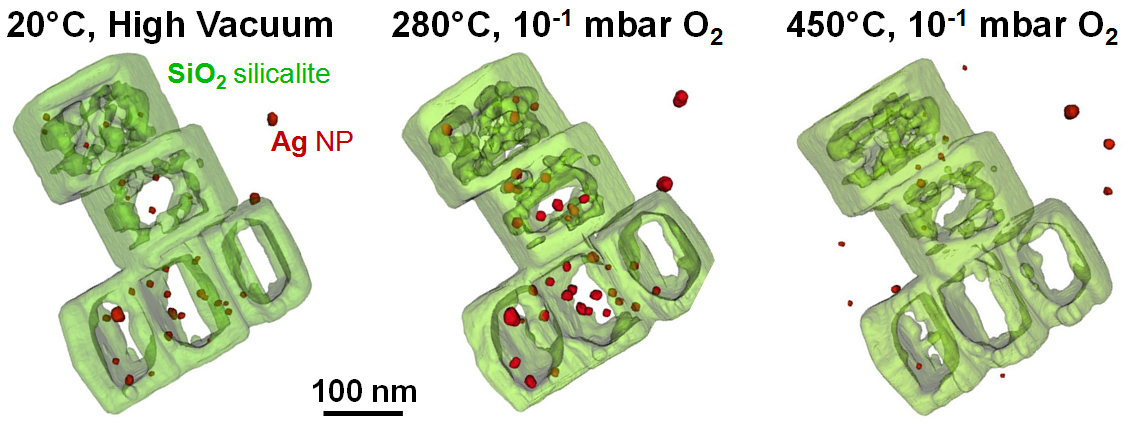updated June 06 2015

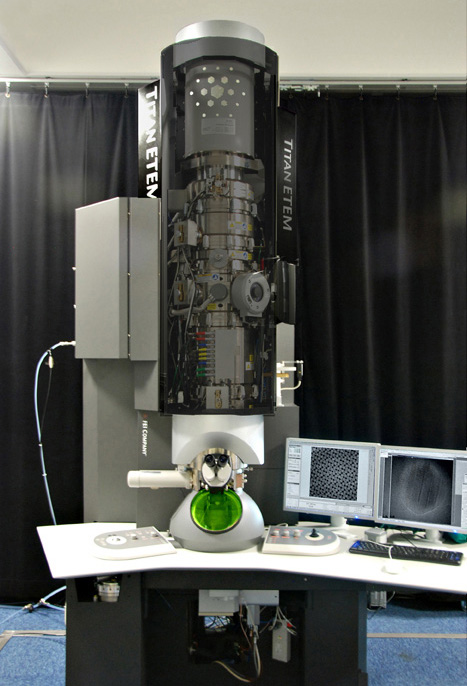
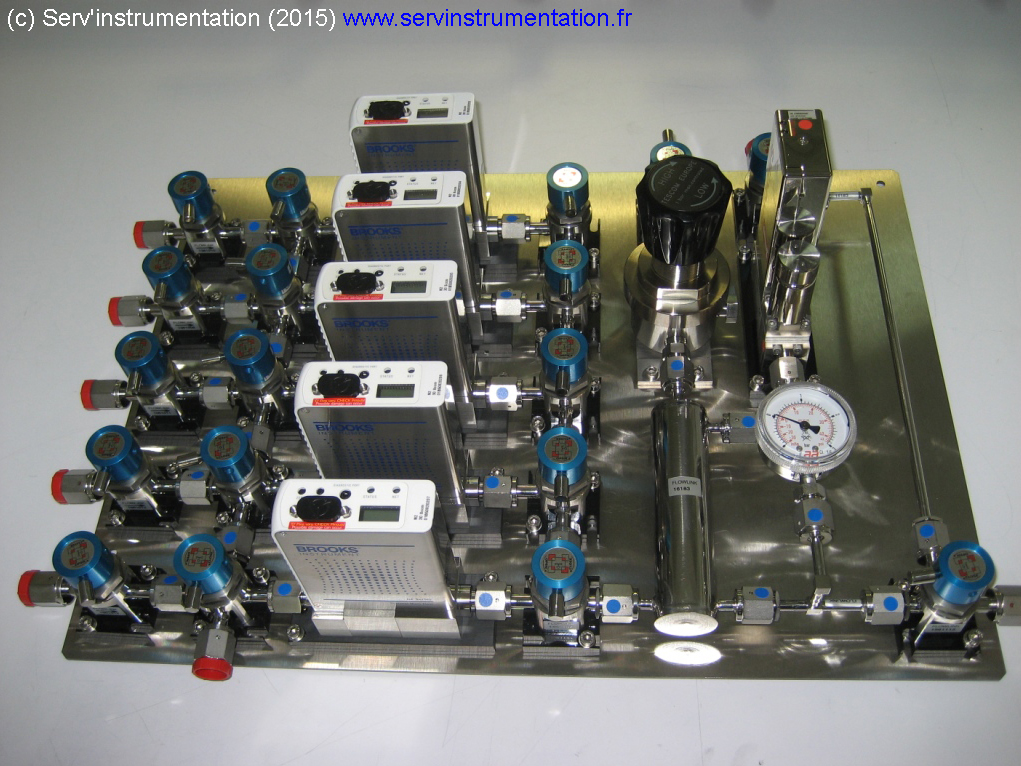
Ly-EtTEM stands for Lyon - Environmental tomographic Transmission Electron Microscope.
This instrument is based on a FEI-Titan ETEM, 80-300 kV, equipped with a X-MAX SDD EDX detector from Oxford-Instrument and a Tridiem ERs GIF from Gatan. It has been installed in January 2013 in a dedicated building of the IRCELYON laboratory, one of the 13 CLYM partners. Gas inputs are handled through a high purity, high accuracy 5 channels mixing system provided by Serv'Instrumentation (2015).
ATOMIC PACMAN
A silver nanoparticle deposited on a carbon supporting film is observed at 300 kV under an oxygen pressure of 0.6 mbar at 495°C. O2 molecules dissociated at the surface of the Ag NP and further reacts with the carbon film to produce volatile CO2: the supporting film is thus consumed and the NP runs on it to maintain the contact. Short sequence of about 2', low res.; (c) Ly-EtTEM team, (2013).
Note: click here or the image below to run the video sequence
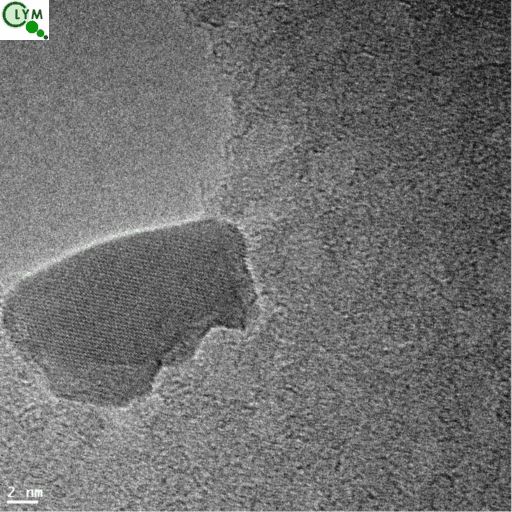
CONTROL of the REDUCTION STATE of CERIA (CeO2)
Left: the same Ceria NP particle is successively observed at RT under 1 mbar of oxygen (left) and high vacuum (right): note the high surfaxce mobilty of the 'top' (001) surface in the second case. Right: EELS spectra of the O-K edge recorded under the same two conditions; no change occurs under oxygen whereas reduction of Ce4+ into Ce3+ is revealed by the decrease of the first peak of the O-K edge under HV. Short 'looped' sequences, low res. (c) T. EPICIER, M. AOUINE, F.J. CADETE SANTOS AIRES, C. DANIEL, IRCELYON, (2014).
Note: click here or the images below to run the video sequence
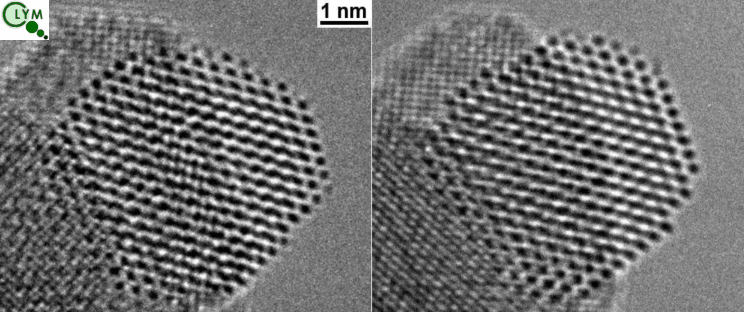

A CATALYTIC EXHAUST PIPE in the TEM
Due to European standards since Euro 4, Diesel Particulate Filters are now compulsory on Diesel car motors to diminish Particle Matter emissions through a regeneration phase in which the collected soot is oxidized. A catalyst, here Yttria-Stabilised Zirconia is then used to optimize the soot oxidation. In this low res video sequence recorded at 495°C under 10-2 mbar of oxygen in the EtTEM (full time about 4'), a soot particulate is consumed at the contact with a ZrO2 crystallite. Magnification is increased at the end of the sequence to insure atomic resolution; it is seen that some (metallic) impurity present in this soot synthetized in the laboratory does not burn [A. SERVE et al., Applied Catalysis A: General, (2015), online www.elsevier.com/locate/apcata].
Note: click here or the image below to run the video sequence
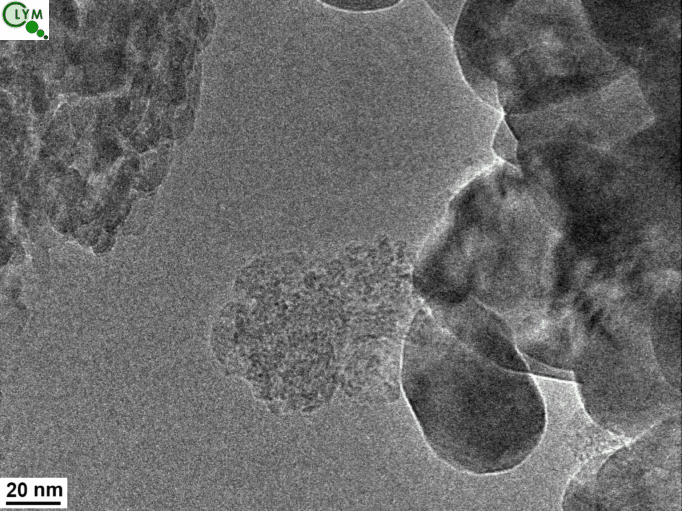
HIGH RESOLUTION PERFORMANCES
Here are some examples of high resolution micrographs recorded under environmental conditions.
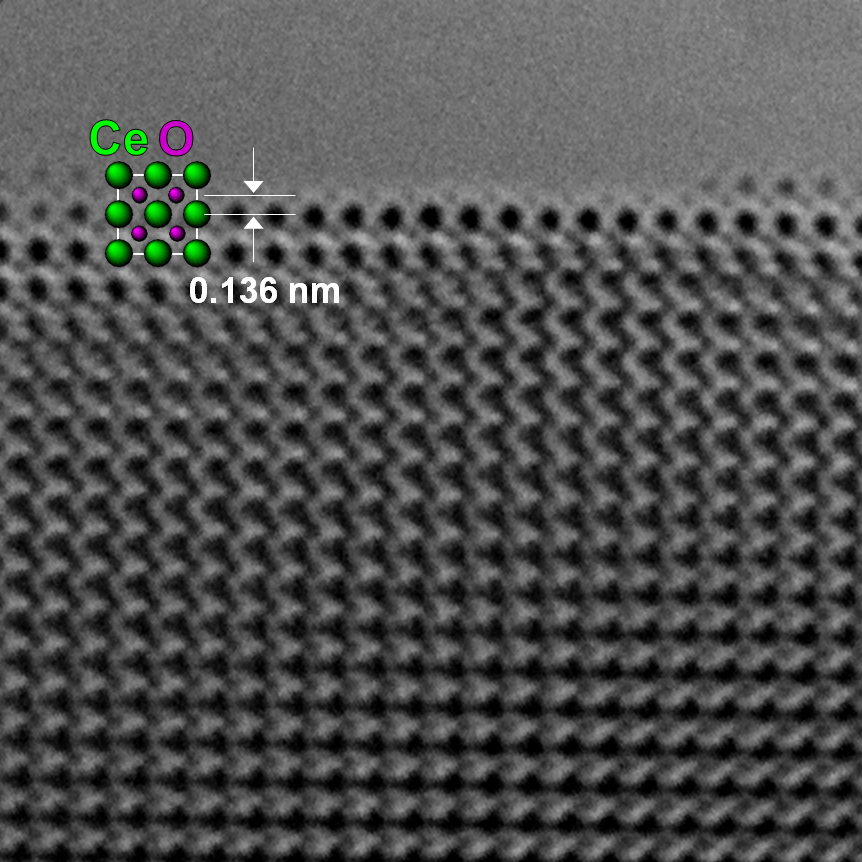
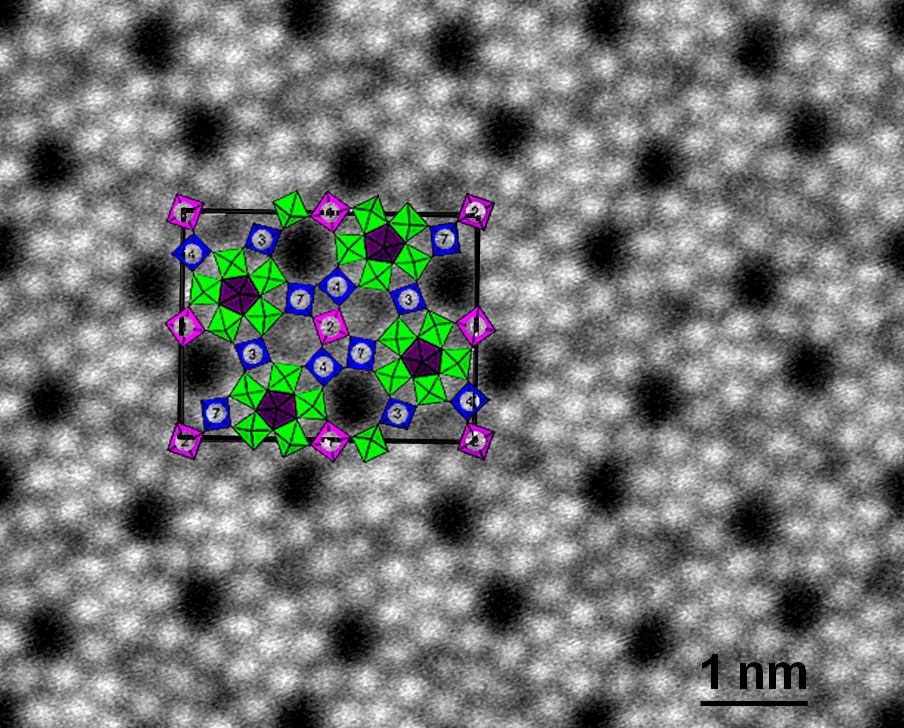
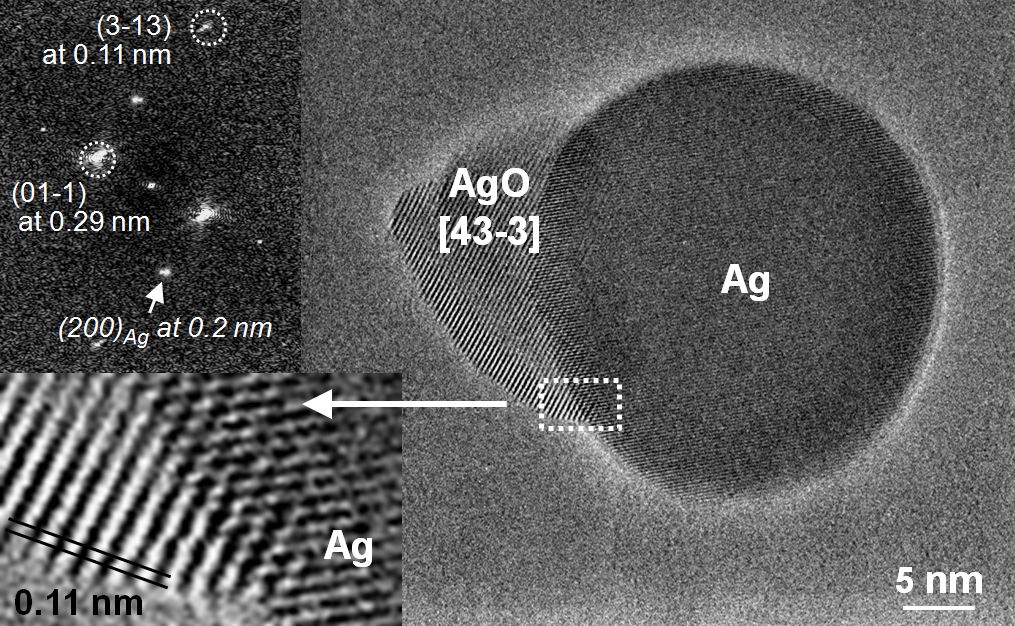
Top left : Oxygen terminating surface of the (001) facet of a CeO2 nanocube after stabilisation under 5 10-2 mbar of oxygen (c) T. EPICIER, MATEIS/IRCELYON), K.P. MANN, Z. WU, S.H. OVERBURY (ORNL, USA), (2015). Top Right: Atomic STEM imaging of the "M1" phase (Mo,V,Te,O) under 1 mbar of a C2H6 + air mixture at 350°C (c) J.M. MILLET et al., IRCELYON. Bottom: evidence of transfer of information down to 0.11 nm during the in situ oxidation of a silver NanoParticle under 5 mbar of oxygen above 350°C.
ENVIRONMENTAL NANOTOMOGRAPHY
Fast acquisitions of tilting series allows the same object to be followed in 3D during its in situ evolution under environmental conditions; the example shown below illustrates the coaelescence and decomposition of Ag nanoparticles encaged in slicalites 'boxes' under oxygen as a function of temperature (c) T. EPICIER, L. ROIBAN, S. LI, M. AOUINE, F.C. SANTOS AIRES, A. TUEL, D. FARRUSSENG, Proceed. IMC2014, ISBN 978-80-260-6721-4.
Note: click here or the images below to run the video sequence

